
The San Fernando Valley, known locally as the Valley, is an urbanized valley in Los Angeles County, California. Situated to the north of the Los Angeles Basin, it contains a large portion of the City of Los Angeles, as well as unincorporated areas and the incorporated cities of Burbank, Calabasas, Glendale, Hidden Hills, and San Fernando. The valley is well known for its iconic film studios such as Warner Bros. Studio and Walt Disney Studios. In addition, it is home to the Universal Studios Hollywood theme park.
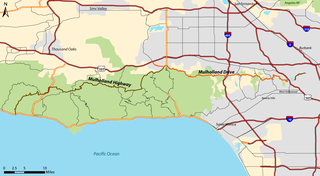
Mulholland Drive is a street and road in the eastern Santa Monica Mountains of Southern California. It is named after pioneering Los Angeles civil engineer William Mulholland. The western rural portion in Los Angeles and Ventura Counties is named Mulholland Highway. The road is featured in a significant number of films, songs, and novels. David Lynch, who wrote and directed a film named after Mulholland Drive, has said that one can feel "the history of Hollywood" on it. Academy Award–winning actor Jack Nicholson has resided at Mulholland Drive for many years and still lives there today.
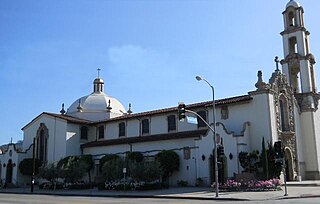
North Hollywood is the northern part of the Hollywood area of Los Angeles, California, located in the San Fernando Valley. The neighborhood contains the NoHo Arts District, the El Portal Theatre, several art galleries, and the Academy of TV Arts and Sciences. The North Hollywood Metro Rail station is one of the few subway-accessible Metro Rail stations in Los Angeles. It is a neighborhood within the city of Los Angeles.

Toluca Lake is a neighborhood in the city of Los Angeles, California, located in the San Fernando Valley 12 miles (19 km) northwest of downtown. The name is also given to a private natural lake fed by wells and maintained by neighboring property owners. Prior to the paving of the Los Angeles River in 1938 and L.A. well extraction in the late 19th and 20th century which lowered the water table, Toluca Lake was fed by artesian springs.

The Hollywood Freeway is one of the principal freeways of Los Angeles, California and one of the busiest in the United States. It is the principal route through the Cahuenga Pass, the primary shortcut between the Los Angeles Basin and the San Fernando Valley. It is considered one of the most important freeways in the history of Los Angeles and instrumental in the development of the San Fernando Valley. It is the second oldest freeway in Los Angeles. From its southern end at the Four Level Interchange to its intersection with the Ventura Freeway in the southeastern San Fernando Valley, it is signed as part of U.S. Route 101. It is then signed as State Route 170 north to its terminus at the Golden State Freeway.

The Ventura Freeway is a freeway in southern California, United States, running from the Santa Barbara/Ventura county line to Pasadena in Los Angeles County. It is the principal east-west route through Ventura County and in the southern San Fernando Valley in Los Angeles County. From the Santa Barbara County line to its intersection with the Hollywood Freeway in the southeastern San Fernando Valley in Los Angeles, it is signed as U.S. Route 101 (US 101), which was built in the late 1950s and opened on April 5, 1960. East of the Hollywood Freeway intersection, it is signed as State Route 134 (SR 134) which was built by 1971.

Ventura Boulevard is one of the primary east–west thoroughfares in the San Fernando Valley region of the City of Los Angeles, California. Ventura Boulevard is one of the oldest routes in the San Fernando Valley as it was originally a part of the Camino Real. It was also U.S. Route 101 (US 101) before the freeway was built, and it was also previously signed as U.S. Route 101 Business.
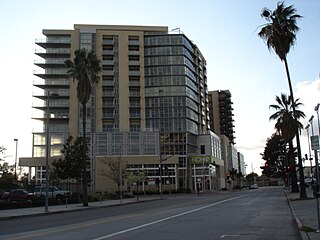
The NoHo Arts District is a community in North Hollywood, Los Angeles, California, that is home to contemporary theaters, art galleries, cafes, and shops. The community is generally bounded by Hatteras Street to the north, Cahuenga Blvd to the east, Tujunga Ave to the west, and Camarillo Street to the south. The area features more than twenty professional theaters, producing new work and classics, diverse art galleries, public art, and professional dance studios. The district also features the largest concentration of music recording venues west of the Mississippi. A Metro Rail station is located here, the North Hollywood station of the B Line, and serves as the terminus of the Metro G Line busway.

Universal City/Studio City station is an underground rapid transit station on the B Line of the Los Angeles Metro Rail system. It is located under Lankershim Boulevard at its intersection of Campo de Cahuenga and Universal Hollywood Drive in the neighborhoods of Universal City and Studio City, after which the station is named.

North Hollywood station is a combined rapid transit and bus rapid transit (BRT) station in the Los Angeles Metro Rail and Metro Busway systems. It is the northwestern terminus of the B Line subway and eastern terminus of the G Line BRT route. It is located at the intersection of Lankershim Boulevard and Chandler Boulevard in the NoHo Arts District of the North Hollywood neighborhood in the San Fernando Valley of Los Angeles.
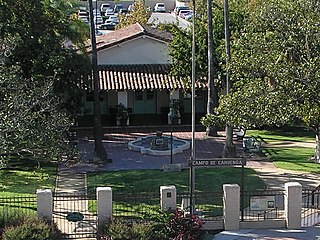
The Campo de Cahuenga, near the historic Cahuenga Pass in present-day Studio City, California, was an adobe ranch house on the Rancho Cahuenga where the Treaty of Cahuenga was signed between Lieutenant Colonel John C. Frémont and General Andrés Pico in 1847, ending hostilities in California between Mexico and the United States. The subsequent Treaty of Guadalupe Hidalgo of 1848, ceding California, parts of Colorado, Nevada, New Mexico, and Arizona to the United States, formally ended the Mexican–American War. From 1858 to 1861 the Campo de Cahuenga became a Butterfield Stage Station.

Laurel Canyon Boulevard is a major street in the city of Los Angeles. It starts off at Polk Street in Sylmar in the northern San Fernando Valley near the junction of the San Diego and the Golden State (I-5)) freeways. Laurel Canyon Boulevard bypasses the city of San Fernando to the west, running parallel to I-5 in the vicinity of Pacoima and Arleta. The portion through Sun Valley passes through rock quarries and a great deal of open space.

Cahuenga Boulevard is a major boulevard of northern Los Angeles, California, US. The “Cahuenga” name is a Spanish, phonetic derivative with no actual Spanish language meaning that is attributed to the Tongva village of Kawengna, meaning "place of the mountain". It connects Sunset Boulevard in the heart of old Hollywood to the Hollywood Hills and North Hollywood in the San Fernando Valley.
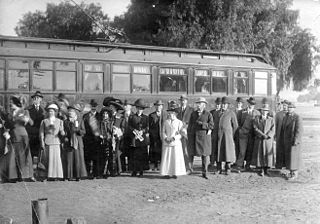
The San Fernando Line was a part of the Pacific Electric Railway system in Los Angeles County, California. It was designed to increase the reach of public transportation from the Downtown Los Angeles and Hollywood into the San Fernando Valley, to support land speculation and development expanding Los Angeles.

The history of the San Fernando Valley from its exploration by the 1769 Portola expedition to the annexation of much of it by the City of Los Angeles in 1915 is a story of booms and busts, as cattle ranching, sheep ranching, large-scale wheat farming, and fruit orchards flourished and faded. Throughout its history, settlement in the San Fernando Valley was shaped by availability of reliable water supplies and by proximity to the major transportation routes through the surrounding mountains.
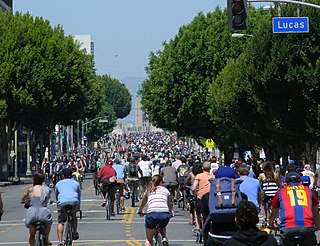
CicLAvia is a nonprofit, car-free streets initiative in Los Angeles, California. The organization temporarily closes streets to motor vehicles to make them accessible to vendors and the public. It runs six times a year on new and repeating routes.
Nahas was a chain of department stores owned by A. S Nahas, operating in Greater Los Angeles, carrying clothing, household goods and electronics. They also acquired Rathbun's department store at 5311 Lankershim Blvd. in North Hollywood and cobranded it "Nahas Rathbuns" before the branch closed in 1980. The remaining Nahas stores closed in 1981–2.

Lankershim and West Lankershim are historical names for an area in what is now the greater North Hollywood section of the San Fernando Valley region of Los Angeles County, California.
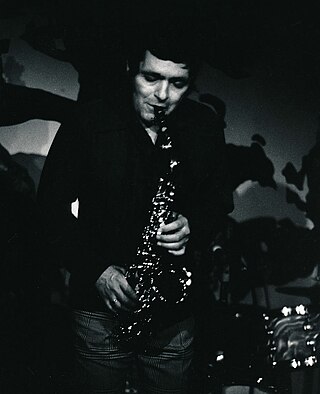
Donte's was a jazz club and diner and cocktail bar at 4269 Lankershim Boulevard in North Hollywood, Los Angeles, to the north of Universal Studios. One of the West Coast's best known jazz clubs in the 1970s and 1980s, it opened in 1966 and closed in 1988.


















